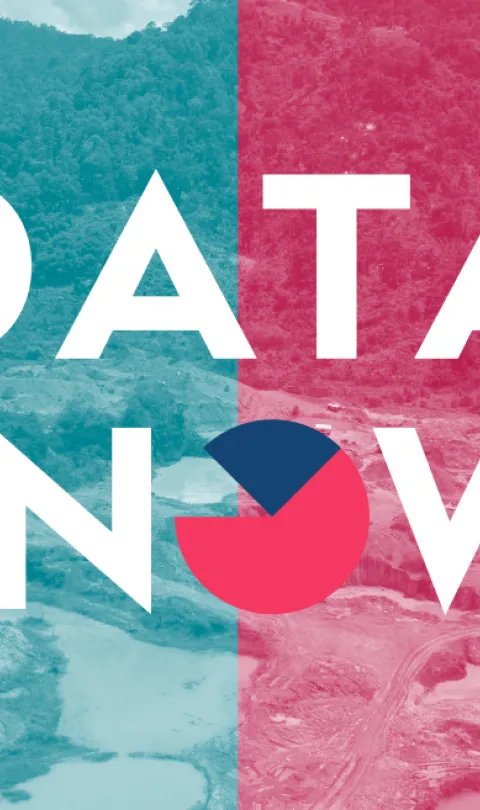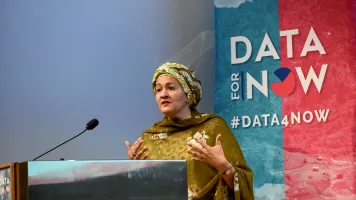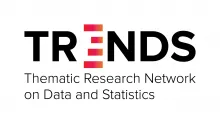We’ve launched Data for Now and excitement is high. All stakeholders, from governments to multilaterals to private sector, can see the problem clearly – we don’t have enough up-to-date data to know how to achieve the SDGs, nor how to prioritize those furthest behind. We’ve all agreed upon that, and we understand that the problem is complex. So what do we do about it? What does the initiative actually involve?
It’s not an easy question to answer, because as with many complex problems, there is no easy solution.
The Global Partnership for Sustainable Development Data’s approach to partnerships and our Theory of Change are good places to start. But there’s no one, clear-cut method to tackle this very global, broad challenge ahead of us. It’s not possible to define in advance exactly what interventions will be designed and supported, but that is exactly why we need Data for Now. No two countries will need the same thing, and every country will need many different things, but Data for Now provides a mechanism for us identify priorities, link specific problems within those priorities to specific solutions, and make sure those problems have easy access to potential, willing solutions.
When we start with this clear objective and work backwards, things become more clear.
So what are the information gaps we must fill to make progress on the SDGs? And what exactly does progress look like? Unpacking this question is key to the success of the initiative. Unpacking this question is urgent too, and we’ve already begun ahead of the kick-off workshop taking place in Kigali from 13-14 November, where pioneering governments will work with stakeholders to develop partnership roadmaps.
We started by talking to Data for Now’s country partners, to ensure the initiative focused around their specific priorities. While many approaches follow the thinking “if we build it, they will come,” projects envisioned under this logic may lack justification, and are often difficult to sustain over the long-term. Development priorities, policy impact, healthy data ecosystems, capacity, and political context need to be taken into account to ensure uptake and sustainability – top priorities for Data for Now.
The demand-driven approach is necessary, but it isn’t always seamless:
- It depends who you ask. Different parts of the same government often have very different needs and goals. Representatives from statistical offices can have quite different priorities from others who represent departments like planning, finance, or international relations. In some cases, it was great to have a broad perspective from varied stakeholders, giving us a fuller picture of the country’s context. In other cases, where we didn’t have as many voices weighing in, we wondered what others would say.
- We’re defining the scope in real-time. A priority outcome is closing data gaps for monitoring the SDGs, which have a clearly defined set of indicators and methodologies. It’s not the only priority though. We also want to scale solutions to achieve the SDGs and national development priorities; these can include localised approaches or those indirectly related to SDG indicators. Such a broad potential scope of work can make it difficult to concentrate.
- You don’t know what you don’t know. Innovative and scalable solutions on data for sustainable development exist in all corners of the world, and it’s impossible to keep abreast of them all. We need to balance awareness and priorities, with the fantastic opportunities for partnerships within the network and beyond. Knowledge-sharing is key.
- Technology is frustrating. An honourable mention for the proportion of each conversation dedicated to important questions like “Can you hear me?” and “I can’t dial in – can you dial me in?” This is especially challenging given that partners and stakeholders connect from around the world with ensuing connectivity and platform access issues. It underscores the importance of face to face conversations and convenings like the upcoming workshop in Kigali.
To address some of these issues, we assessed the main priorities based on conversations with country partners, national development plans, SDG reporting, and current projects underway. With a better sense of what may be important and what partnerships may be relevant, it becomes easier to anticipate the trajectory of the Data for Now initiative and more pressingly, the Kigali workshop.
Our ambition with Data for Now is to scale solutions that are sustainable, with an ecosystem that all partners benefit from for continuous progress. We’re excited to dive deep into these conversations in person next week, to connect the dots between partners.
Want to get involved? Get in touch. We’re eager to hear from policymakers, experts, data providers, funders, and everyone in between.
This is the second post in the Data for Now blog series. Read the first post here.


